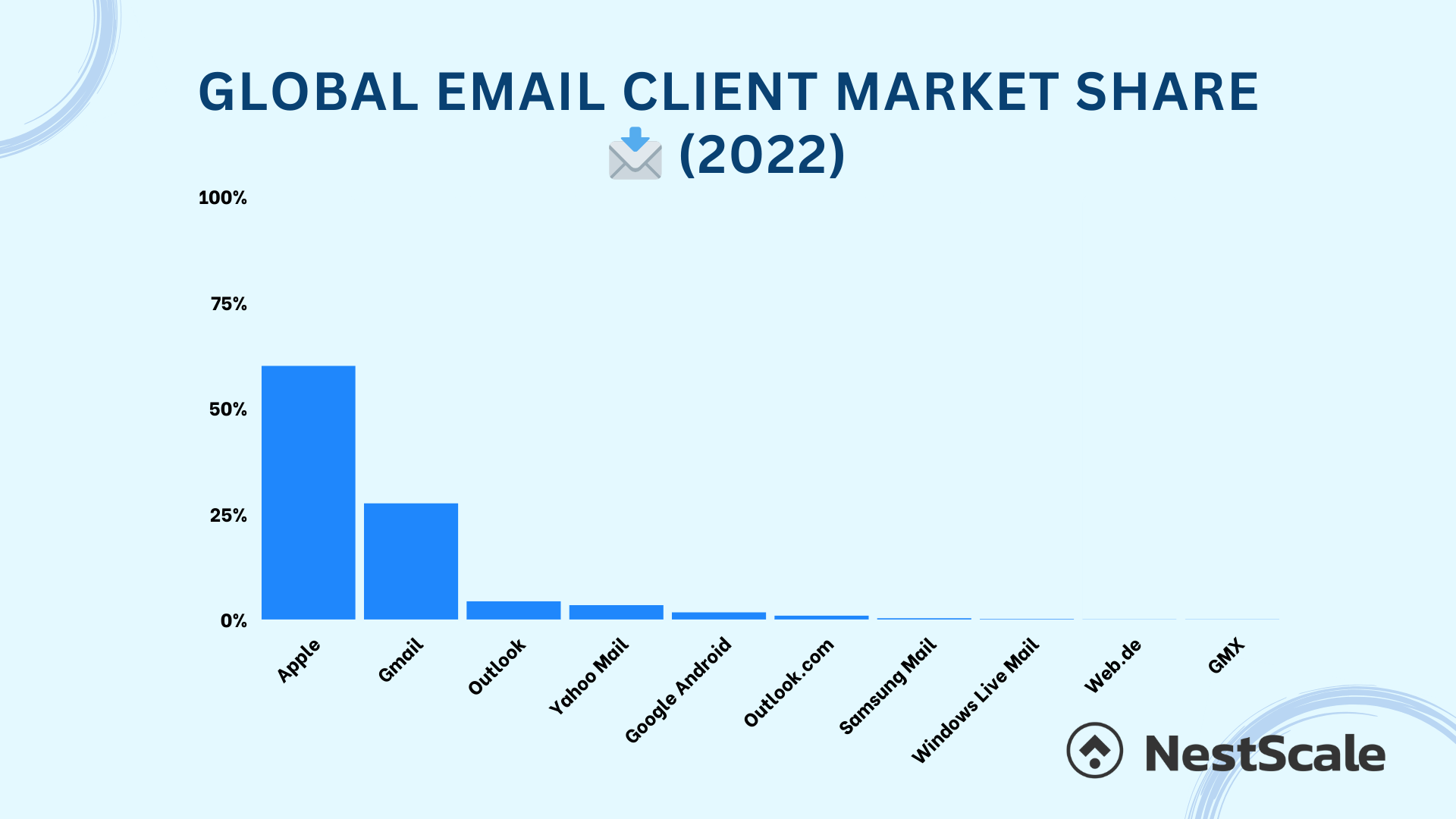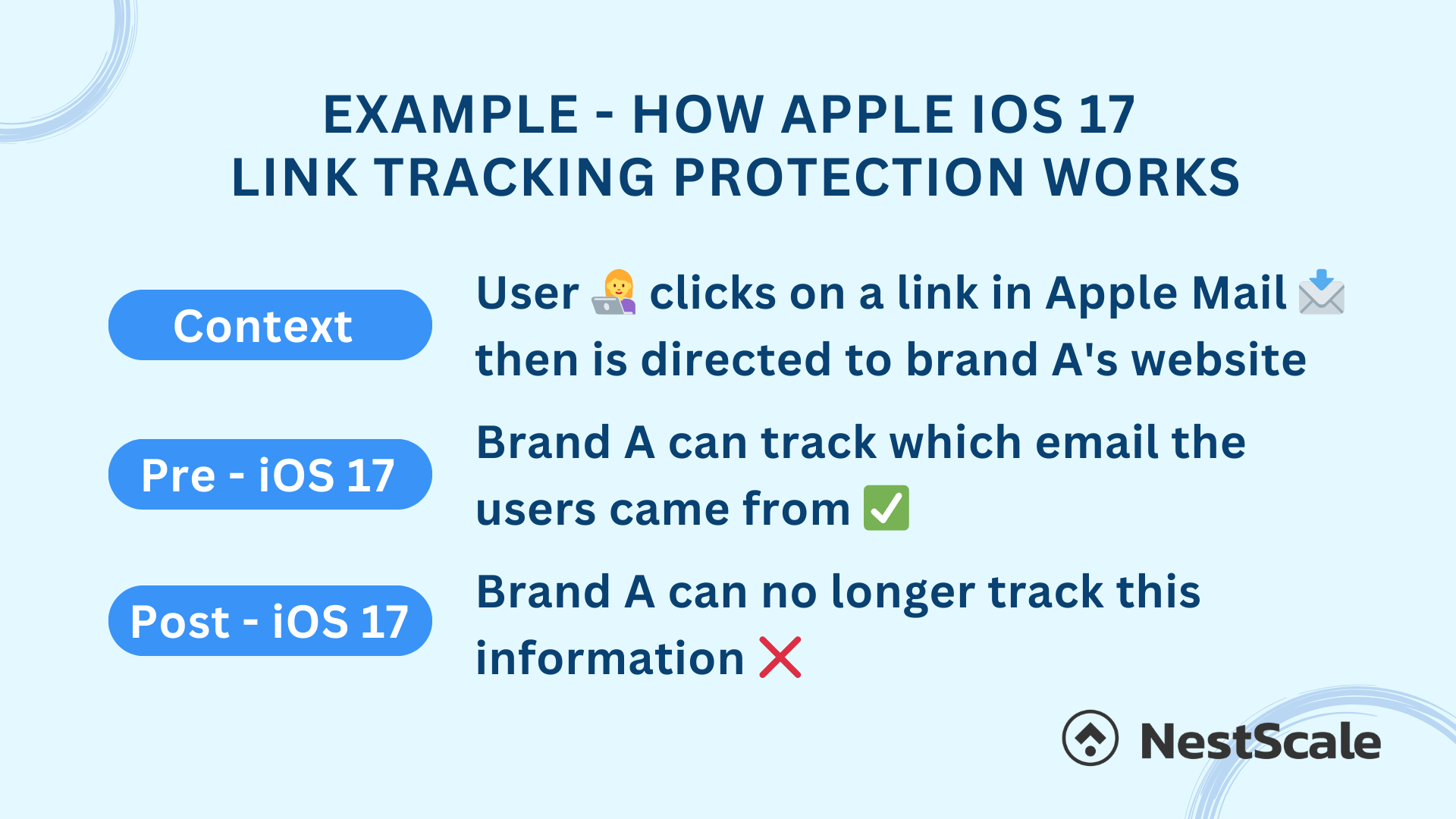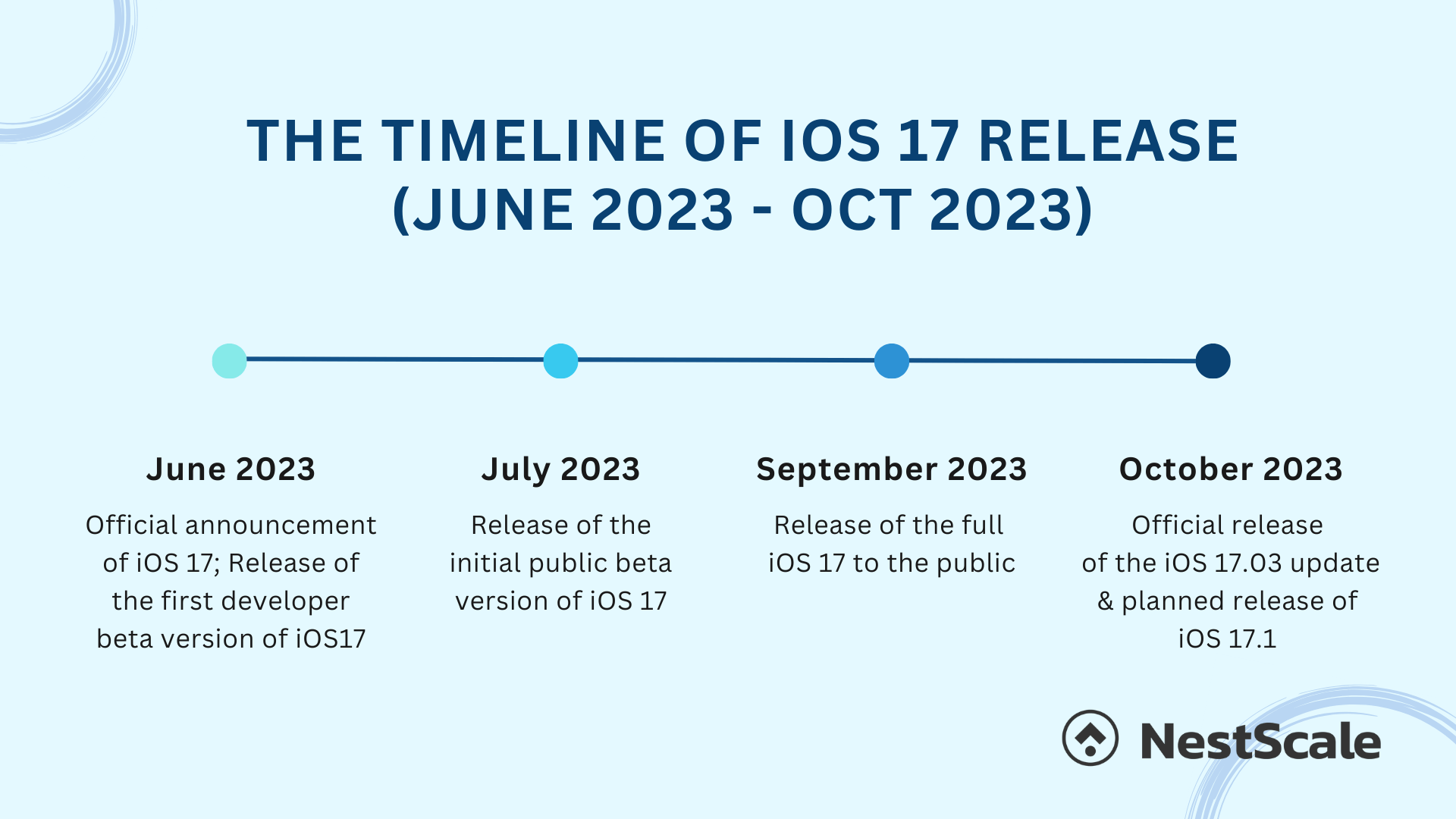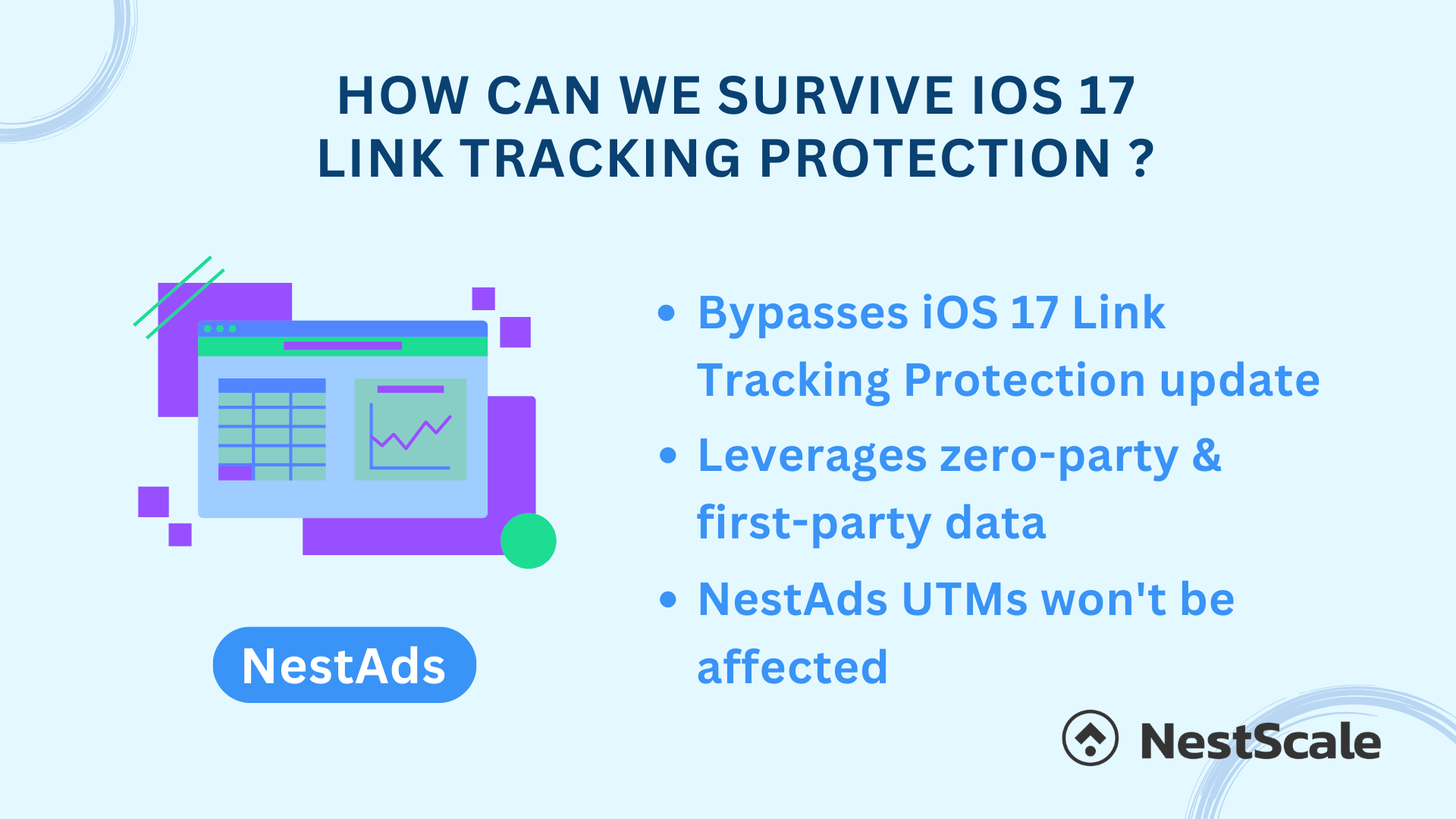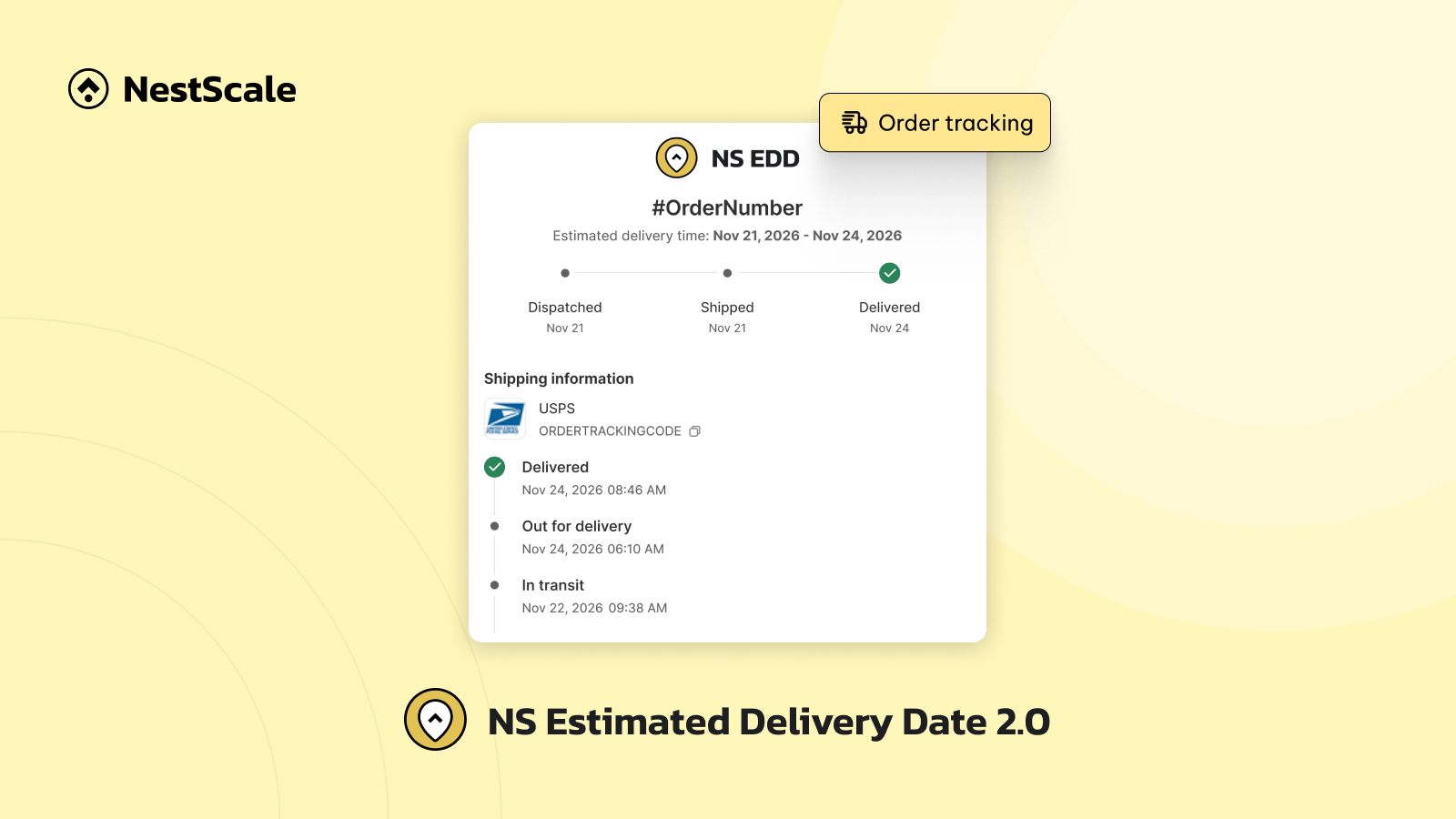With the release of iOS 17, Apple has introduced significant changes to user privacy and data tracking. One of the key features of this update is iOS 17 Link Tracking Protection. Expectedly this brand new feature has left a profound impact on how marketers collect and utilize data for campaign tracking. So, in this blog post, we’ll dive into what iOS 17 is and explore the ins and outs of Link Tracking Protection. We’ll also provide insights into how marketers can navigate their way through this ever-changing landscape.
What is link tracking protection in iOS 17?
iOS 17 is the latest version of iOS – Apple iPhone & iPad’s operating system, released with a strong emphasis on enhancing user privacy and security. Along with other updates in terms of functions, iOS17 also brings about significant changes in terms of user data collection and control.
One of the most significant updates of this iOS version is the introduction of iOS 17’s Link Tracking Protection feature. With iOS17 Link Tracking Protection enabled Apple will remove certain tracking parameters from traditional URLs in their Mail app, Messages, and Safari’s Private Browsing mode. This means that third-party data collectors or advertising platforms will no longer be able to track users’ origins or their behaviors while using the aforementioned applications. Due to this sudden shift, marketers now receive less detailed data about user behavior compared to previous iOS versions. As a result, it is becoming more challenging to build comprehensive user profiles and analyze their interactions.
Among Apple’s various segments, Mail is notably the one most visibly influenced by these changes as compared to Messages or Safari’s private browsing mode. According to a Litmus report, Apple’s native Mail app makes up an impressive 58.67% share of the email client market. In other words, it’s the email platform of choice for over half of the global email user population. This eye-opening statistic underscores the significant impact that the iOS 17 Link Tracking Protection update will have on businesses’ email marketing campaigns, particularly on the Apple Mail platform.
Given this context, it becomes crucial for brands to gain a deep understanding of these shifts to effectively address the challenges that lie ahead.
How does iOS 17 affect the tracking process?
Change can be a daunting process, especially when it’s shrouded in uncertainty. But fear not, as we’re about to embark on a journey to delve into the specifics of these changes. Before we dive in, let’s take a moment to go over some key terminology. This will allow us to grasp the full scope of this impactful update.
Some key terminologies
| Terminology | Meaning | Example |
| URL | – Serves as a distinctive identifier to track a resource on the Internet. – Also often referred to as a web address. – Consists of various components, including protocol, domain name, path, query, parameters & more. | https://nestscale.com/blog/marketing-attribution => An URL that takes users to the Marketing Attribution page in the Blog section of the NestScale website. Here, https:// is the protocol, nestscale.com is the domain name, and/blog/marketing-attribution is the path/page. |
| Parameters | – One of the components of a URL. – Allows you to pass information about a click. – These parameters are typically added to the end of a URL and are separated from the base URL by a question mark (?) and separated from each other by ampersands (&). – There are 2 types of parameters: Content-modifying parameters and Tracking parameters. | https://nestscale.com?nestads=pricing => This is a content-modifying parameter, which is located at the end of a URL. It sends information to the landing page, taking the user directly to NestAds’ pricing page on the NestScale website. |
| Tracking parameters/ UTM tags | – Tracking parameters are typically added to the end of a URL and are used to provide insights into the sources, mediums, and specific campaigns that drive traffic to a website or landing page. – UTM tags (Urchin Tracking Module – the predecessor of Google Analytics) are essentially a type tracking parameter. – There are 5 types of UTM parameters: utm_source; utm_medium; utm_campaign; utm_term and utm_content. | https://www.nestscale.com/?utm_source=newsletter&utm_medium=email => The UTM will track website traffic from an email newsletter. |
So, how Apple iOS17 Link Tracking Protection works is by sorting out and removing certain tracking parameters in URLs. Due to this change, some platforms will no longer be able to track users’ activity on certain parts of their buying journey. However, it’s worth mentioning that this removal is only applicable to Apple’s Mail, Message and private mode of Safari.
Example – How Apple iOS 17 link tracking protection works?
For example, a user clicks on a promotional link in their Apple Mail app and is directed to Brand A’s website. Normally, brand A will be able to identify the email that the user opened and came from. However, with the iOS17 Link Tracking Protection update, brand A will no longer be able to track this information.
With that being said, it should be noted that not all tracking parameters will be removed (at least not at the moment). So while this will indeed bring about significant changes to advertisers’ marketing strategy, there’s no need to panic just yet.
Which tracking parameters are affected by iOS 17?
As of now, several popular tracking parameters have experienced this iOS 17 update. According to various sources, some of the blocked tracking parameters (also referred to as click IDs) are of the biggest advertising platforms:
- Facebook (fbclid): Used for tracking Facebook ads campaigns.
- Google Ads (gclid): Used for tracking Google ads campaigns.
- Instagram (igshid): Used for tracking Instagram ads campaigns.
- Twitter (twclid): Used for tracking Instagram ads campaigns.
- Mailchimp (mc_eid): Used for tracking Mailchimp email marketing campaigns.
- Microsoft (msclkid): Used for tracking Microsoft ads campaigns.
This implies that when a user clicks on a link from these platforms within Apple Mail, Messages, or while using Safari’s incognito mode, their origin or actions won’t be tracked. Consequently, businesses might encounter even more challenges in analyz and attributing credit to various touchpoints in the customer journey.
Which tracking parameters are not affected by iOS 17?
It’s true that Apple has stripped away many tracking parameters with the iOS 17 update. However, it’s rather surprising that some continue to remain unaffected. However, it’s essential to keep in mind that Apple regularly releases new updates. So these tracking parameters could potentially face changes in the future as Apple continues to tighten its user privacy policies. For the time being, though, here are some of the tracking parameters that remain untouched:
- Google Analytics (UTMs): The 5 standard UTM parameters by Google Analytics.
- Klaviyo (_kx): Used for tracking Klaviyo for email marketing campaigns.
- TikTok (ttclid): Used for tracking TikTok advertising campaigns.
- Tracking parameters used in regular standard Safari or non-Safari browsers
At the same time, it is absolutely essential for businesses, especially those dependent on third-party data sources to keep themselves updated on the latest updates regarding Apple’s policies.
The timeline of the iOS 17 release
Now that we know what the iOS17 update entails, it’s time to go over the timeline of this major change.
- June 2023: Official announcement of iOS 17. The first developer beta of iOS 17 was also released.
- July 2023: The release of the initial public beta version of iOS 17.
- September 2023: The release of the full iOS 17 to the public.
- October 2023: Release of the iOS 17.03 update & planned release of iOS 17.1.
Since the operating system update’s initial announcement in June, Apple has been quickly rolling out the releases. Everything from the developer beta version to the official version in September this year. In the one-month period from September to October 2023, Apple has introduced 2 updated versions (iOS 17.01 & iOS 17.02) with fixed bugs and freshly fine-tuned features. With the planned release of iOS 17.03 and later iOS 17.1, a pressing question looms: What might Apple target next in terms of tracking parameters? Will more changes be on the horizon? This uncertainty is precisely why marketers need to keep a close eye on Apple’s update. It’s the only way to stay flexible and adapt their advertising plan accordingly to keep up with these changes.
How can we survive iOS 17 Link Tracking Protection with NestAds?
So, now that we’ve gained a pretty good understanding of iOS 17’s impact on businesses’ advertising activities, a final question arises. How can we cope with such changes? Among the possible answers, one solution stands out from the rest: To leverage marketing attribution tools like NestAds. The reasoning is simple: NestAds will NOT be affected by the iOS 17 Link Tracking Protection update.
One of the reasons for this is that NestAds utilizes alternative methods to track users’ behaviors. One of NestAds’ main features is its ability to leverage first-party data. It refers to the information about users’ behaviors on their websites that your business can generate on your own (after getting the user’s consent of course). Due to this, your NestAds UTMs will not be affected. These reliable data sources will still offer businesses valuable insights into their target customer profiles, while also providing a deep understanding of user behavior while they’re on your website.
In the grand scheme of things, Apple’s iOS 17 Link Tracking Protection update serves as a poignant reminder that change is an inherent part of life, particularly in the ever-evolving landscape of online advertising. The growing emphasis on user data privacy is an inevitable shift that’s reshaping our industry. The key to thriving in this dynamic environment is to stay informed, while also keeping a watchful eye on emerging trends and updates. That’s also exactly what we intend to do. As Apple is planning the eventual release of iOS 17.1 in late October, more changes are on the horizon. However, rest assured because we promise to come back with the latest updates. Until then, keep calm and happy advertising!




































